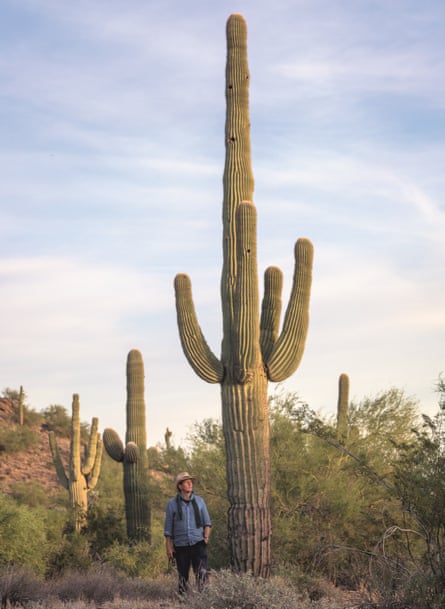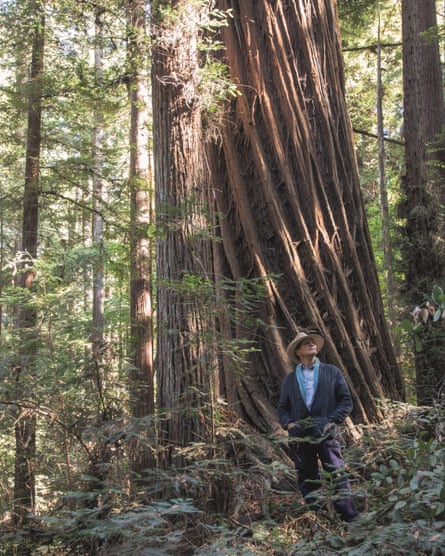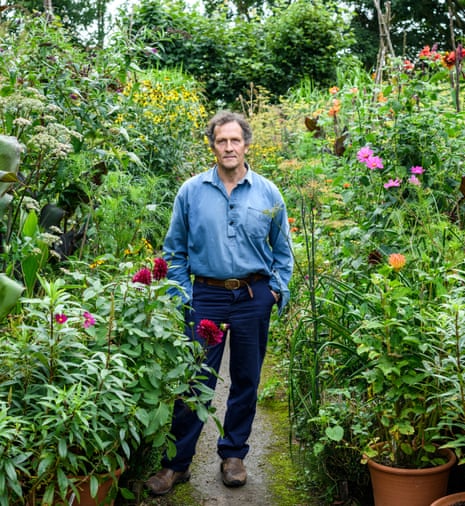‘I’m not a great musician, but I often feel there’s an analogy with music,” says Monty Don, describing his process of interpreting a garden for the first time. “When you’re learning a piece of music, your efforts go into playing the right notes with the right fingers. But until you stop thinking about how to play it, you can’t really hear the music. So when I get to a garden, I try to stop thinking about my research and let my mind freewheel: ‘What does it look like? What do I feel?’”
The main presenter of BBC Two’s Gardeners’ World and all-round champion of thrusting hands into the earth, Don is our gardener at home. Regular viewers (3.8 million people tuned in to one episode during lockdown, the highest figures for a decade) will know his Longmeadow garden as intimately as their own. But, unlike other horticultural television staples, he is also an intrepid gardener abroad. Most recently, it is American gardens that Don has been contemplating, in a book of the same name. “You have this vibrant creativity and this sense of the possible – that you can cut a clearing and be the first person to make a garden there. And that is beyond exhilarating.”
Since Around The World In 80 Gardens aired in 2008, Don has brought us the gardens of Japan, Iran, India, Australia and the Mediterranean, among others. That’s a lot of gardens in a lot of contexts. “I’m always trying to see like an anthropologist,” he says. “Who are these people? What is this place?”
Contextualising American gardens, however, isn’t straightforward. You’re confronted with two inescapable influences: first, the vast and dramatically diverse topography and climate of the country; and, second, the comparative newness of western interaction with it. “That’s why America is so fascinating,” Don says. “We Europeans underestimate the extent to which we imbibe our history and accept without question the evolution of our landscape and our gardens. Whereas in America there’s a huge gulf between wilderness and domesticity: it’s still this astonishingly open country with room to explore, physically and creatively.”

American Gardens takes the form of three journeys, made with Don’s long-standing travel companion, photographer Derry Moore. The book’s release follows January’s BBC series on American gardens, expanding its content and weaving in elements omitted from the programme: transport troubles; a Charleston restaurant they were in “going up in smoke”, and reflections that range from family anecdotes to a loathing of golf courses (“Take the golf out of the course and what you have is slightly monotonous, overpampered parkland”).
The trips loosely divide America by east and west coasts, and a venture through the steamy, Spanish moss-laden south, covering herbaceous planting; rooftop veg plots in Brooklyn; colossal trees; and opulent, occasionally gaudy landscaping. In Chicago, the pair visit the magnificent Lurie Garden, designed with vibrant prairie natives by Dutchman Piet Oudolf; in blazing Arizona, they meet the cacti iconic of westerns; and at Pennsylvania’s world-famous Longwood Gardens, they’re captivated by scale: a garden four times the size of Kew. In Florida, they wander Miami’s Vizcaya estate, the former home of tractor manufacturer James Deering, who had travelled extensively in Italy. Orchid hunting in Florida swampland nearby couldn’t have been more of a contrast. “You go from one to the other in the space of an afternoon: in the UK it would be like walking out of Esher in Surrey and finding yourself in the Hebrides.”
Another inescapable context, addressed from the outset, is the role of slave labour in gardens. “You cannot ignore it,” says Don, recalling the change he witnessed revisiting Thomas Jefferson’s Monticello garden in Virginia, built by the 400 slaves kept at his plantation. “When I filmed there 13 years ago, slavery was not a subject those running the garden felt able to deal with. This time they insisted we talk about it.” This focus was also there in the plantation gardens of South Carolina. At Middleton Place outside Charleston, America’s oldest landscape garden, ruins of the former house, burned by Union soldiers in the civil war, are preserved as a prominent reminder of a tumultuous and complicated history.

Back home, uncomfortable truths are also surfacing in Britain’s own horticultural institutions. Responding to the Black Lives Matter movement, Kew’s director of science, Alexandre Antonelli, has called for the decolonisation of Britain’s botanic gardens, and a revision of the “imperialist view” that appropriates discovery of plants long known to indigenous peoples. “You can’t get away from the fact that we went uninvited to countries, took their plants and claimed them as our own,” Don says. “There’s no simple act that is going to undo those things, but we do have to acknowledge it. Growing dahlias doesn’t mean you’re racist against Mexicans, but the cosy, comfortable world of gardening has to say, ‘We are part of this.’”
Don bemoans the lack of racial diversity in the horticulture industry. “I feel very strongly that gardens, gardening television and the RHS [Royal Horticultural Society] have to play a role. If you go to any allotment there is an incredibly diverse community. You’ve got to open the doors for people.”
In 2017, Gardeners’ World opened its doors to its first black presenter, Flo Headlam, soon followed by another woman of colour, garden designer and writer Arit Anderson. The team have been dispensing horticultural escapism to a nation turned to gardening during this unsettling summer.

Jose, California. Photograph: Derry Moore
“The BBC felt it was important we kept going, rather like in wartime – keeping the spirits of the nation up,” Don says. Robot cameras were installed, leaving Don with the “pretty weird” experience of presenting alone in his garden. But the effect of lockdown, he says, extends beyond gardening. “I like to think that it has engaged some people for the first time in their own world: growing seeds, watching the robins, noticing the clouds, even. But also in terms of valuing homegrown food, [becoming more aware of] climate change, the use of plastic and peat – these bigger issues are connected to local, back-garden things. It’s easy to say, ‘Let’s save the rainforest’, because you’re not having to do it. If you’re really interested in looking after the world, it’s all on our doorstep – in the garden you can actually do it.”
So where should we begin? “Make it personal – grow something you like to eat; grow something to harvest on your birthday, or a rose to give on an anniversary. To me, everything about gardening is personal because I never did it for any other reason. The process is creative and it heals my troubled brain.”
Open about his long struggle with depression, one might assume the combination of a pandemic and the death of his golden retriever, Nigel, in May – a Gardeners’ World fixture – posed a significant challenge for Don. “Lockdown, for me, was not a hardship. It was a glorious spring and I had a garden surrounded by countryside. Losing Nigel…,” he pauses. “Outside the genuine sadness of losing a friend, it was a beautiful May day, and he’d shown no sign of illness. He went from being 100% fine to dead in 12 hours. But he was a good age and he’d lived a good life, so we were grown up about it. In terms of the public… ” He laughs. “We were overwhelmed with letters. I had somebody contact me from Fiji, ‘I’ve just heard the news!’”
Draw up a list of native American flora introduced to UK gardens and you’ll quickly realise the debt we owe: from magnolias and oaks to hydrangeas, lobelias, agave and yucca – let alone the many coneflowers. For me, growing these plants forges a connection with the magnificent American landscapes that I love. For Don? “To see acres of coneflowers growing in their natural habitat is breathtaking,” he says. “On a more prosaic level, my pumpkins and squashes, which are so very American, are doing well.” What better way to make it personal.
